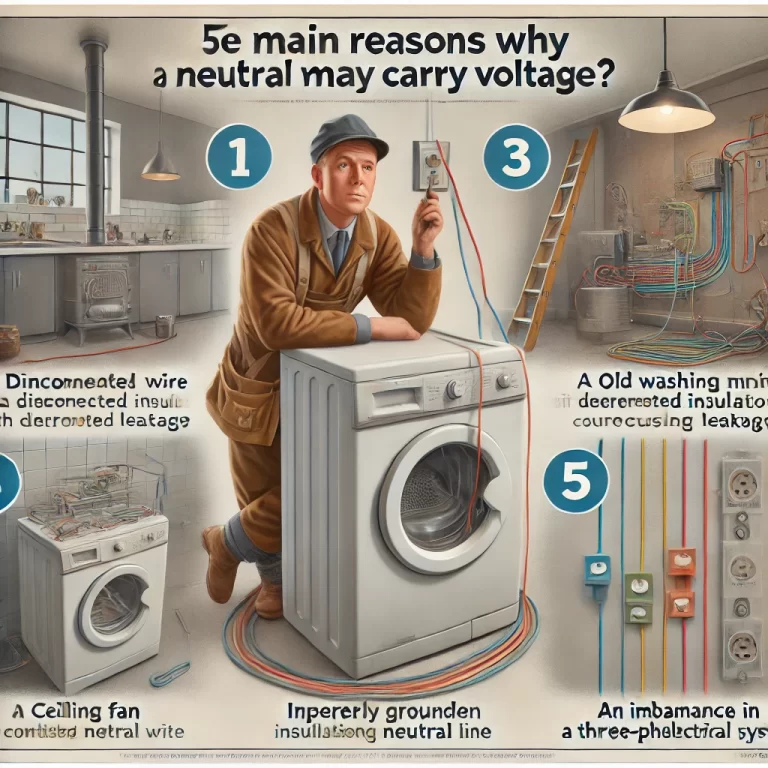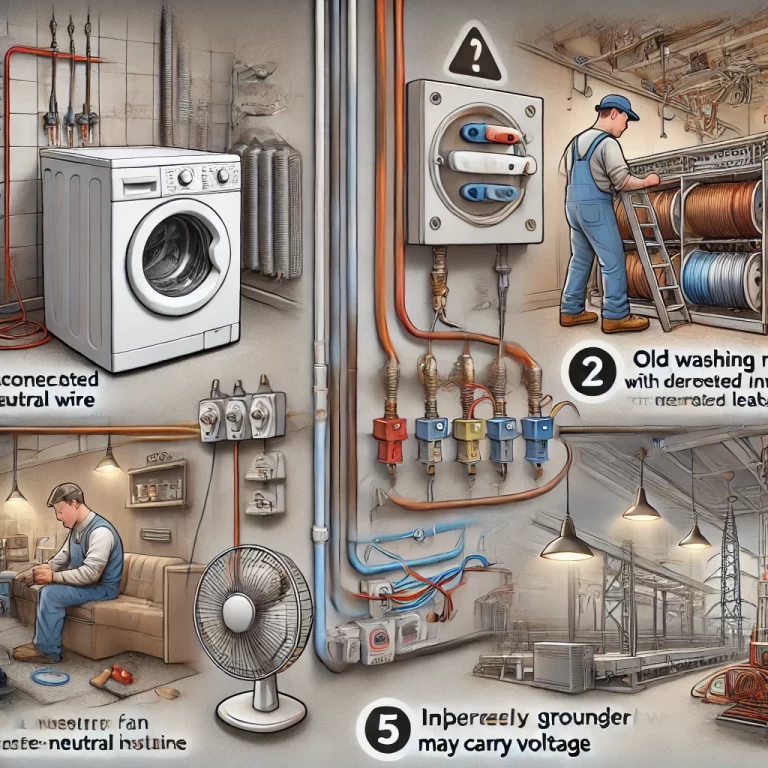When a neutral wire carries voltage, it poses risks such as electric shock, equipment damage, and other hazards that can disrupt daily life and production. Understanding the causes behind this phenomenon is crucial for identifying and addressing the issue effectively. Let’s explore the five main reasons why a neutral wire might carry voltage.
1. Neutral Wire Disconnection
Electric current flows from the live wire through the load and eventually to the neutral wire. If the neutral wire is disconnected, the circuit becomes incomplete, disrupting the flow of electricity. This disconnected neutral wire can then start carrying voltage, behaving like a live wire.
Example: Imagine a household appliance connected to a socket with a faulty neutral wire. If the wire disconnects, the device may stop functioning, and the exposed part of the neutral wire could become hazardous.
Prevention: Regularly inspect wiring connections, especially at terminals and junction points, to ensure the continuity of the neutral wire.
2. Leakage in Electrical Equipment
Equipment that has not been maintained or has aged insulation can develop leaks in the electrical circuit. When this occurs, the leakage current may flow into the neutral wire, causing it to carry voltage. If a residual current device (RCD) or ground fault circuit interrupter (GFCI) fails to function, this issue can persist undetected.
Example: A washing machine with deteriorated insulation can cause leakage currents, leading to the neutral wire carrying unexpected voltage.
Prevention: Conduct regular maintenance and replace old appliances with worn-out insulation. Test your RCD or GFCI periodically to ensure they are functioning correctly.

3. Poor Neutral Wire Grounding
In some installations, the neutral wire is used as a substitute for the grounding wire. When electrical equipment leaks current, both the neutral wire and the device casing may carry voltage. This scenario is especially dangerous as the device casing can become live.
Example: In industrial settings, improper grounding of the neutral wire can expose workers to electric shocks when handling machinery.
Prevention: Follow proper electrical standards that distinguish between neutral and grounding wires. Ensure all equipment is grounded correctly and verify grounding integrity during inspections.
4. Switches Controlling the Neutral Line
In certain configurations, switches are used to control the neutral wire rather than the live wire. When this happens, the neutral wire carries voltage while the circuit is open, creating a potential hazard.
Example: A ceiling fan wired with a switch on the neutral line may carry voltage even when the switch is off, exposing users to risk during maintenance.
Prevention: Ensure switches control the live wire, not the neutral wire, in accordance with standard electrical practices.
5. Three-Phase Load Imbalance
In a three-phase power system, the neutral wire typically has a voltage close to 0V under balanced conditions. However, if the phases are unbalanced—due to uneven loads—the neutral point shifts, causing the neutral wire to carry voltage.
Example: In a manufacturing plant, unevenly distributed machinery loads can lead to voltage differences in the neutral wire, affecting equipment performance.
Prevention: Balance loads across all three phases and use power quality monitoring systems to detect and correct imbalances.

Summary and Recommendations
A neutral wire carrying voltage can result from various factors, including disconnections, equipment leaks, grounding issues, improper wiring, and load imbalances. To mitigate these risks:
- Conduct regular inspections of wiring and connections.
- Maintain and upgrade electrical equipment proactively.
- Follow electrical standards and best practices during installation.
- Train personnel on identifying and addressing potential hazards.
- Use monitoring tools to detect abnormalities in power systems.
By understanding these causes and implementing preventive measures, you can ensure safer and more reliable electrical systems.
